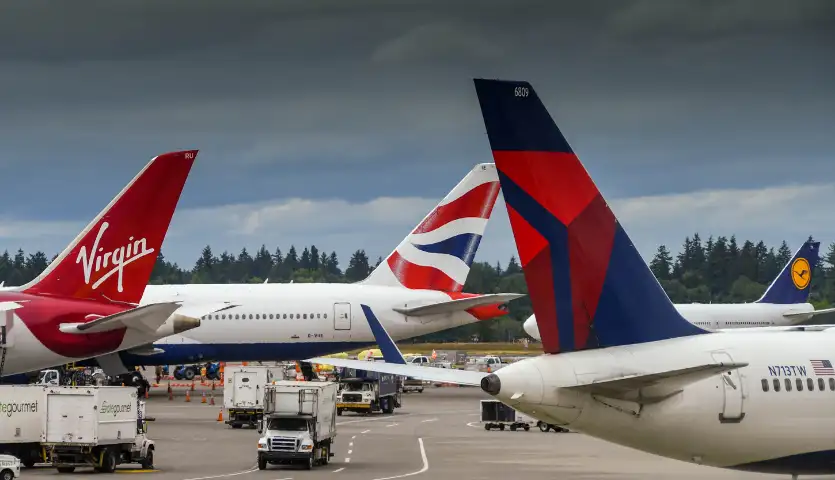
Flights around the world have been halted due to the COVID-19 crisis. Airlines will inevitably return to service, but it is still unknown as to when and to what extent. While I believe most established airlines will continue to fly, there are sure to be some that are forced to go out of business.
Considering past performance, financial stability, route networks, and government assistance, here’s a look at what airlines I believe are the most (and least) likely to survive the COVID-19 crisis.
- Airlines That Should Survive
- Airlines on the Fence
- Airlines That Might Dissolve
- Consolidation and Mergers Among Airlines
Airlines That Should Still Be Flying After COVID-19 Crisis
The 4 largest U.S. airlines should be able to survive this crisis and keep flying, albeit at a much different scale. The recent Coronavirus Aid, Relief, and Economic Security (CARES) Act makes it apparent that the U.S. government will not let our air transportation network fail. The government assistance seems more geared to keep the larger airlines afloat, but some provisions are in to keep a competitive environment viable.
American Airlines
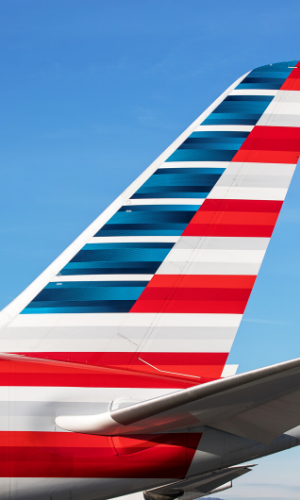
The largest airline in the world in terms of passengers carried in 2019 is likely to come out of the crisis just fine thanks to $5.8 billion in government aid, brand recognition, and a network that can keep cities around the world connected with its partnerships and alliances. The hub and spoke model of route networks is likely to become more prominent when the industry emerges and American’s hubs in Dallas and Charlotte will remain a vital part of its network. It may even decide to focus more on Chicago service to better connect cities in the northwestern half of the country with the East Coast. International flying will likely take more time to recover, so its Miami hub may be downsized more than others and American will likely rely on airline partners to fly passengers beyond major international hubs around the world.
Delta
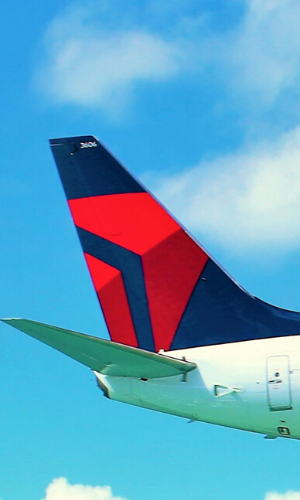
Delta held the title of the most profitable airline in the world in 2019 so it has the means to keep flying in a post-pandemic world. Its hubs are already geographically spread out to provide efficient connections — even with a large decline in service offered. Delta will be a much smaller airline in the future. It is retiring all of its older McDonnell Douglass MD-88 and MD-90 aircraft and will likely retire more of its fleet to coincide with demand. Focus cities may be diminished to serve only hub cities while hubs on the coasts may only fly to a few international destinations that allow passengers to connect with partner airlines. Delta will be getting $5.4 billion in federal relief from the CARES Act, which has some strings attached that could result in the U.S. government owning a small stake in the airline, as is the case with other large U.S. airlines.
Southwest
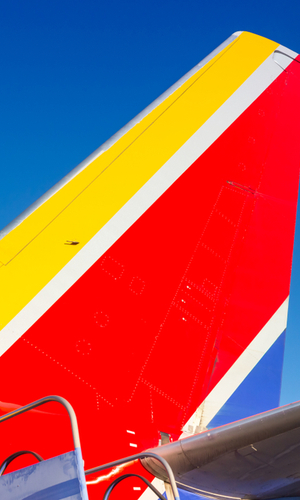
CEO Gary Kelly has stated that Southwest is not downsizing. The Dallas based carrier plans to keep flying to all of its destinations and does not want to furlough employees. This will obviously depend on how quickly the airline industry recovers and demand for travel increases. Since it expects to receive more than $3.2 billion dollars in aid from the CARES Act, Southwest will be required to keep the majority of its staff and cities at least through the end of September. Its network, which provides nonstop flights in several markets that the “Big 3” legacy carriers don’t offer, could come to resemble a hub and spoke model in the future. The schedule has already been adjusted to reflect this trend and I expect even more nonstop routes to only be offered with a connection in the future. As for international service, Southwest is a relatively new face and we’ll likely see some international destinations fall off of the route map.
Related: The Complete List of Southwest Airlines International Destinations
Spirit Airlines
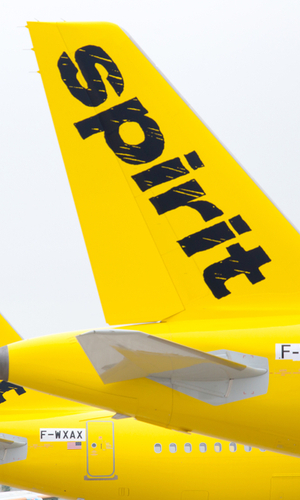
Contrary to its reviews, Spirit Airlines has actually been a fairly profitable airline. The no-frills carrier has more of a hub and spoke network than other ultra-low-cost carriers in the U.S., which could allow it to continue service to many of its cities even though nonstop flight options are likely to disappear in many markets. Spirit has yet to accept any government aid from the CARES Act and it will only get a fraction of what the larger airlines are receiving. It will clearly have to cut back much of its rapid expansion in recent years, but if Spirit takes any government aid, it will have to maintain a bare minimum service to nearly all of its cities. After seeking a waiver from the DOT to suspend service from 26 cities, it was only granted one in Aguadilla. I still believe there will always be a place for a budget airline like Spirit when leisure travel demand does finally make a comeback.
United Airlines
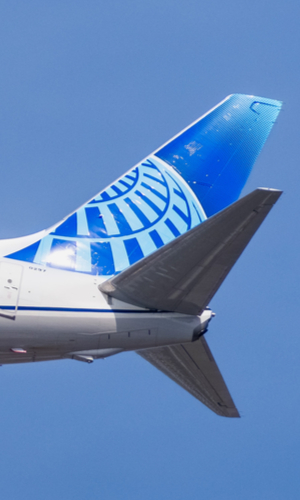
United CEO Oscar Munoz and President Scott Kirby have painted a pretty grim picture, stating in a letter to employees that they “have some tough decisions ahead as we plan for our airline, and our overall workforce, to be smaller than it is today, starting as early as October 1.” Since United is expected to receive approximately $5 billion in government aid from the CARES Act, it won’t be able to involuntarily furlough or stop flying completely from its U.S. cities through September, but this statement makes it clear that the airline plans to downsize as much as possible as soon as it can. The large government assistance may not be enough to keep the airline running as much as is hoped, but it indicates that United may be an airline that is too big to fail. Its hubs are dispersed around the country to provide seamless connections that will be more prominent due to severely reduced frequencies. And as part of the largest airline alliance in the world, Star Alliance, United can rely on partner airlines to keep it connected without many international flights of its own.
International Airlines
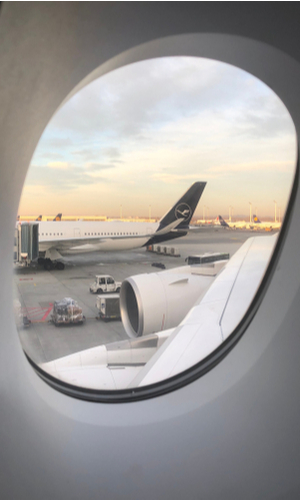
As is the case in the U.S., I also expect the majority of the major flag carriers around the world to stay in business. Some airlines, such as Emirates and Qatar, are state-owned and governments will be doing everything they can to keep their airlines afloat. Brand recognition will also play a role in an airline’s survival after this pandemic has passed. I believe we’ll still be able to fly on well-known airlines like Air Canada, Aeromexico, ANA, Avianca, LATAM, Singapore Airlines, and Qantas. In Europe, we may see some national airlines combine into their respective alliances, but I believe we’ll still see brands like British Airways, Air France, Lufthansa, Ryanair, and Turkish Airlines. The major airlines in China, Air China, China Eastern, and China Southern, will also likely survive.
Related: What Airlines Are Doing to Address Concerns About COVID-19 (Coronavirus)
Airlines on the Fence After COVID-19 Crisis
I believe this group of airlines will still be flying through the end of 2020 and into 2021. It’s likely that some of these will indeed survive the coronavirus crisis, but I think we may see some of these airlines completely cease operations, start flying a very small regional network, or become acquired by larger carriers.
Alaska Airlines
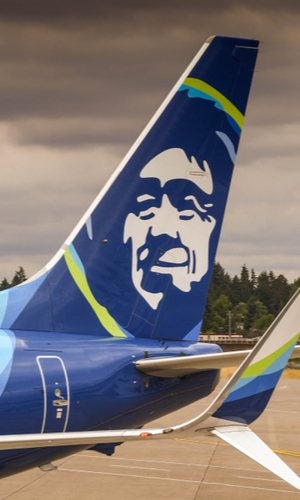
Alaska Airlines will get nearly $1 billion in aid from the CARES Act, which will keep the airline operational in the short term. Since Alaska Airlines is primarily a West Coast airline, I think we’ll see many of its Midwest and East Coast cities disappear from the route map after September. For now, in order to fulfill the minimum service requirements, it is consolidating flights to certain cities by collecting passengers in multiple stops before flying to/from its main hub in Seattle. It’s hard to see Alaska Airlines flying much more than a few West Coast routes or even just a regional operation to, from, and within Alaska since the demand for flying in other markets will likely be filled by the larger airlines. I could even see the possibility of American Airlines eventually taking over Alaska Airlines in a merger down the road.
JetBlue
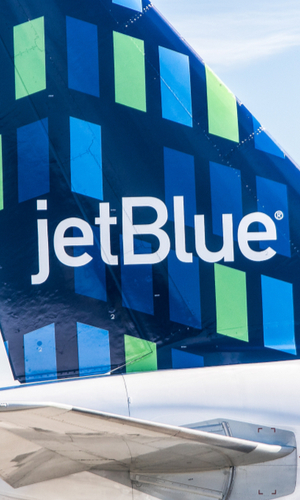
JetBlue is probably the most likely to survive in this list of airlines I think are on the fence after the crisis. It is one of the most beloved airlines in the U.S. and has a strong presence in the Northeast, which is the most populated area of our country. That being said, I think it will become a much smaller airline going forward — if it does continue to keep flying. JetBlue will receive around $1 billion in aid from the CARES Act to keep the majority of its employees paid a minimum salary through September, but when that runs out I expect to see plenty of cuts to its workforce and route map. It will probably have to rely on high-demand flying to/from New York and Boston, with West Coast flights to become extremely limited if not abolished altogether. A few years down the road, I could also see one of the legacy carriers swallow up JetBlue if the travel industry doesn’t demand the competition.
Frontier Airlines
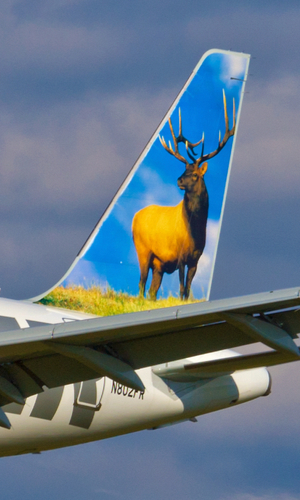
Frontier has expanded rapidly over the past few years and has been flying a unique schedule for leisure travelers in smaller cities across the U.S. Even though it will only be required to fly to many of these cities a few times per week in order to be eligible for government assistance, the demand for flights out of cities like Fargo and Knoxville just won’t be there to support a niche airline like Frontier. If it can obtain waivers to the minimum service requirements for the 36 cities it has applied for, Frontier will have a better chance of surviving. But if it takes an extended time for leisure travelers to start flying the friendly skies, I don’t see much room for Frontier Airlines to keep flying. Its only true hub is Denver, so Frontier could possibly get acquired by a larger airline like United or Southwest, which both have a lot of overlapping flights, or another airline wishing to add a hub in the west.
International Airlines
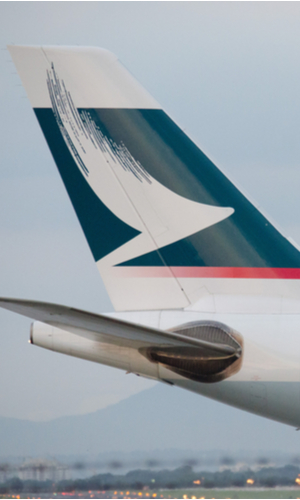
Since this is a global pandemic, many international airlines around the world will be in limbo following the crisis. I could see several carriers either go out of business or become more intertwined with a larger airline group and lose their branding altogether. Some international carriers I see as “on the fence” after the COVID-19 crisis include Air Transat, Interjet, Alitalia, Aer Lingus, EasyJet, Japan Airlines, Cathay Pacific, Azul, Caribbean Airlines, and Kenya Airways. The survival of these airlines largely depends on how far government assistance will go and, of course, how much demand for flying there will be in the future.
Related: COVID-19 Flight Cancellations by Region and Airline
Airlines That Might Dissolve After COVID-19 Crisis
The most vulnerable airlines are those which have just recently started operations or have expanded route networks that just aren’t viable when leisure travel is in low demand. Here’s a list of some airlines I think will have the most trouble surviving this crisis and why that might be.
Allegiant Airlines
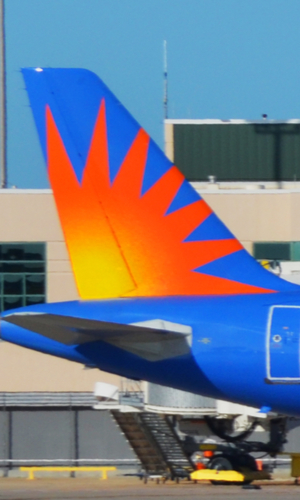
Like Frontier, Allegiant also flies a very unique route network that is aimed at providing nonstop flights from small town U.S.A. to leisure destinations like Florida and Las Vegas. Allegiant takes this strategy a step further in that it even uses smaller secondary airports like Punta Gorda, Sanford, and St. Petersburg in Florida and Mesa Airport in Arizona. It also flies the vast majority of its routes just twice per week. I think Allegiant Airlines is the least likely to survive among the ultra-low-cost carriers, because it flies from such small cities that will probably not demand even the limited flights Allegiant offers for quite some time.
Hawaiian Airlines
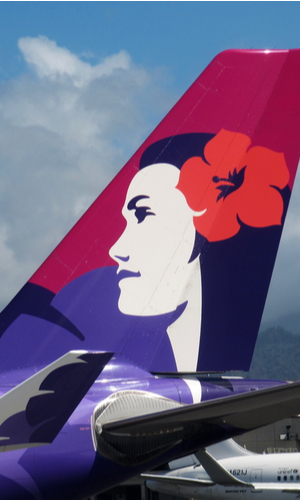
Hawaiian Airlines could be hit hard by the minimum service requirements included in the CARES Act. In order to receive any aid, Hawaiian may be required to keep flying more empty long-haul routes than any of the major U.S. airlines. It has applied for exemptions, which could keep the airline afloat, but low demand for flying overall could mean the end for Hawaiian Airlines. Since Southwest has entered the market and also started flying between islands, it may be too hard for Hawaiian Airlines to compete and I could see Southwest or one of the legacy carriers taking over Hawaiian Airlines in the future.
Related: What the CARES Act means for Airlines and Airfares
Sun Country Airlines
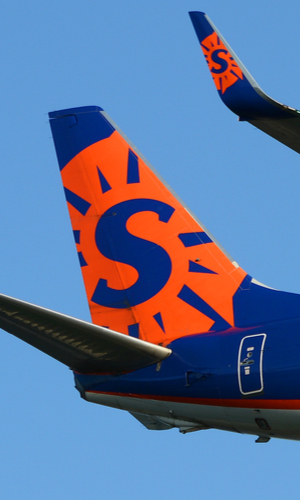
As the hometown airline for my home state of Minnesota, I’d hate to see this friendly airline go out of business, but I don’t think its main hub of Minneapolis/St. Paul is a big enough metro area to support two airlines in the post-pandemic travel scene. Delta will likely maintain a large enough operation out of MSP to satisfy the lower number of passengers and Sun Country has not really become well-known in other areas of the country.
International Airlines

Transatlantic travel has been incredibly cheap for the past few years, but I think the days of $200 or $300 roundtrip flights across the ocean may come to a halt after this crisis. The most popular low-cost carrier flying across the Atlantic, Norwegian Air, has already been having financial issues and I think it will be one of the first airlines to hang it up when all is said and done. Other low-cost airlines around the world, such as Swoop, VivaAerobus, and French Bee will probably meet the same fate. European airlines like Austrian Airlines, Brussels Airlines, and Swiss could see route networks diminished to the point where branding just becomes part of the larger airline group (Lufthansa). Virgin Atlantic and Virgin Australia are in a tough spot since both airlines primarily serve a leisure travel market that might not demand more service than what is offered by larger airlines. South African Airways just got cut off from government aid so it’s on thin ice and some lesser-known Chinese airlines will also likely fall victim to the crisis, such as Xiamen Airlines, which is owned by China Southern.
Related: How to Get a Refund for Flights Canceled Due to COVID-19
Consolidation and Mergers Among Airlines Seems Likely
For the sake of cheap airfares, I hope most airlines survive this crisis. More competition means lower fares as we have seen time and again when new airlines emerge or when any airline enters a new market. However, we’ve never seen anything quite like the drop in passenger demand that the coronavirus (COVID-19) has brought to the industry. In recent years, we’ve seen many airlines come and go, along with several airline mergers following the recession in 2008. If history tells us anything, it’s highly likely that we will see more consolidation and mergers following this economic downturn.
While it may make sense for the large airline alliances to simply start branding as Oneworld Airlines, SkyTeam Airlines, and Star Alliance Airlines, national pride and government restrictions probably won’t allow that to happen any time soon. I do think we’ll see airline mergers within nations or within an economic union such as the E.U. For now, it’s all speculation, but it will be interesting to see how this all plays out in the future.
Stay on top of breaking sales, fare drops, and more! Follow us on Twitter @Airfarewatchdog. And make sure to sign up for FREE airfare alerts to be notified when prices drop.
Featured image: Ceri Breeze / Shutterstock
We hand-pick everything we recommend and select items through testing and reviews. Some products are sent to us free of charge with no incentive to offer a favorable review. We offer our unbiased opinions and do not accept compensation to review products. All items are in stock and prices are accurate at the time of publication. If you buy something through our links, we may earn a commission.
This story originally appeared on our sister site airfarewatchdog.com.
Related
Top Fares From
Today's Top Travel Deals
Brought to you by ShermansTravel
Kenya: 14-Night Tour, Incl. Tanzania &...
smarTours
 vacation
$7125+
vacation
$7125+
7-Night Caribbean Round-Trip Cruise From Orlando:...
Norwegian Cruise Line
 cruise
$739+
cruise
$739+
Ohio: Daily Car Rentals from Cincinnati
85OFF.com
 Car Rental
$19+
Car Rental
$19+



